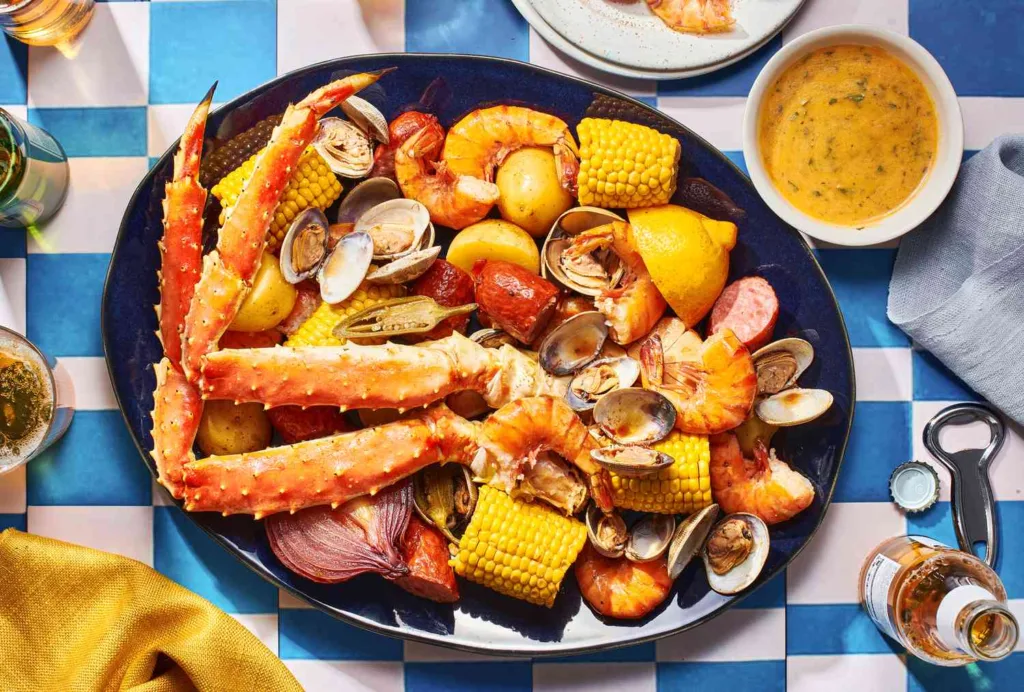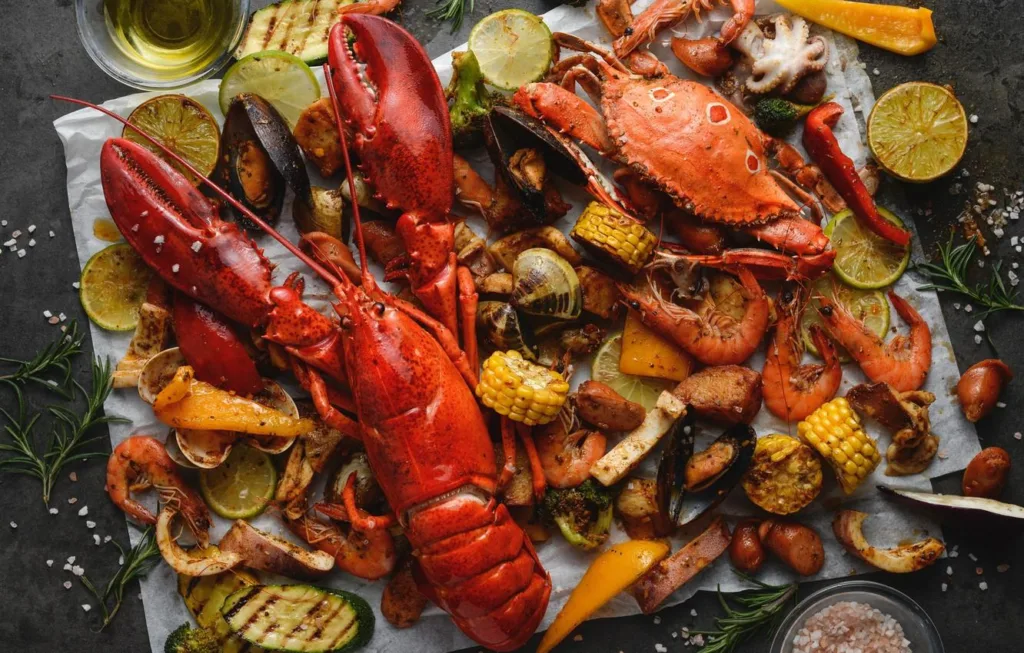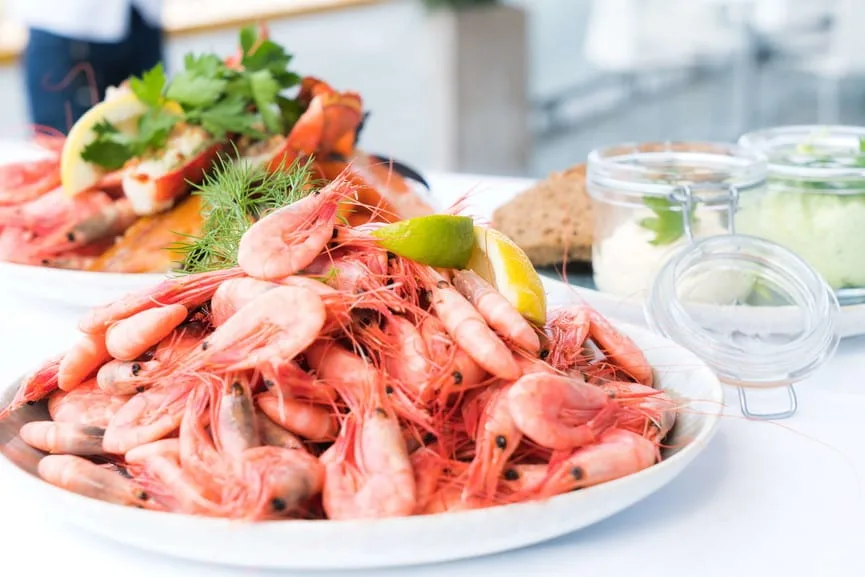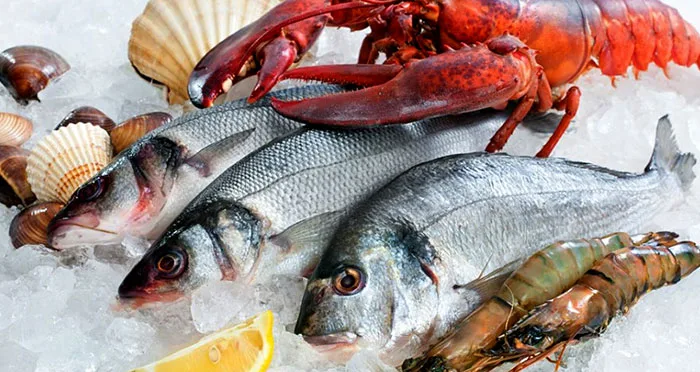Losing weight can seem like an uphill battle. With so much confusing and contradictory advice, it’s hard to know where to start. However, one simple shift can set you on the path to success: incorporating more seafood into your diet. Seafood is a nutritional powerhouse that can help you improve your health while slimming your waistline. This harmonious food group is the missing note that completes the weight loss symphony.

The Importance of a Balanced Diet
Achieving a healthy weight requires a balanced diet full of nutrient-dense foods. Lean proteins, whole grains, fruits, vegetables, and healthy fats are all important components. Seafood delivers a hefty dose of protein with minimal calories and plenty of vitamins and minerals. Adding more of this aquatic bounty to your plate is a simple way to get closer to your weight loss goals.
The Role of Seafood in Weight Loss
Study after study has found that people who eat more seafood weigh less. The high-quality protein packs a powerful punch when it comes to boosting metabolism, reducing appetite, and burning fat. Unlike meat, seafood is naturally low in saturated fat, making it a slimming substitution. Taking the symphony metaphor further, seafood is the conductor keeping your weight loss efforts in tune.
The Nutritional Benefits of Seafood
Low-Calorie, High-Protein Source
Seafood is one of the best sources of protein available. A 3-ounce portion of salmon contains over 20 grams of protein for less than 200 calories. Protein requires more energy to digest than carbs or fat, so you burn more calories digesting seafood. The bounty of branched-chain amino acids in seafood help build and preserve muscle mass too. Since muscle tissue burns more calories at rest than fat, building muscle is key for weight loss.
Omega-3 Fatty Acids for Weight Management
All seafood contains anti-inflammatory omega-3 fatty acids, but fatty fish like salmon and mackerel are particularly rich sources. Research suggests omega-3s help reduce belly fat and may make it easier to lose weight. These healthy fats promote satiety by slowing digestion and regulating hunger hormones. Like a symphony of nutrients, omega-3s harmonize beautifully with protein for appetite control.
Seafood’s Impact on Metabolism
Several nutrients abundant in seafood play a role in boosting metabolism. The selenium, iodine, and B vitamins in seafood support thyroid function to rev up your metabolic rate. Omega-3s can also increase fat burning by activating brown adipose tissue, the cells responsible for generating heat. With seafood’s help, your metabolism becomes a fat-frying machine.

Seafood Varieties for Weight Loss
Not all seafood is created equal when it comes to weight loss. Some options provide better nutritional value and satiation. When composing your seafood diet, opt for these virtuosic varieties.
Salmon: A Protein-Rich Superfood
Fatty fish like salmon can almost single-handedly lead you to weight loss success. Salmon is rich in protein, low in calories, and packed with healthy omega-3 fats. Research reveals eating more salmon promotes weight loss and reduces waist size. Salmon’s satiating protein and omega-3 content provides a symphonic duo to crush hunger and cravings.
Tuna: A Lean and Versatile Option
Tuna is a triple threat, delivering ample protein, omega-3s, and vitamin D for just around 100 calories per serving. The lean protein makes it more filling than carbohydrate-based meals. Tuna is also budget-friendly and versatile for salads, sandwiches, poke bowls and more. Keep things harmonious by choosing sustainably caught tuna packed in water.
Shrimp: Low-Calorie, High-Protein Delight
Shrimp boasts an impressive nutrition profile, with a whopping 20 grams of protein in just a 4-ounce serving. At roughly 100 calories with minimal fat, shrimp is diet-friendly while still tasting decadent. Shrimp contain astaxanthin, an antioxidant that may ramp up fat burning according to some research. Feel free to work more of this low-calorie seafood into your symphony of meals.
Cod: A Lean White Fish for Weight Watchers
Flaky white fish like cod make it easy to get lean protein into your diet. A 3-ounce piece of cod contains 15-20 grams of protein for less than 90 calories and virtually no fat. Cod is rich in vitamin B12 and selenium to support thyroid hormone production and boost metabolism. The mild flavor makes cod a blank canvas for seasoning with calorie-free herbs and spices.
Mackerel: Packed with Omega-3s
This oily fish often gets overlooked but deserves a spot in your nutritional concerto. Ounce for ounce, mackerel contains more omega-3s than salmon. Mackerel is loaded with high-quality protein, vitamin D, selenium, and magnesium as well. Adding mackerel to your diet provides an influx of slimming nutrients to promote satiety and fat burning.
Healthy Seafood Cooking Techniques
Preparation is key when cooking seafood for weight loss. Healthy cooking methods allow you to leverage seafood’s full nutritional potential without adding excess calories.
Baking and Grilling vs. Frying
Opt for dry cooking methods like baking, broiling, grilling or roasting. These techniques don’t require any added fat. If sautéing, use minimal healthy oil like olive or avocado oil. Avoid breaded seafood and skip the butter sauce if weight loss is the goal.
Flavorful Seasoning without Adding Calories
Seasonings take seafood’s flavor to new heights without sabotaging your diet. Experiment with fresh herbs, spices, garlic, lemon, vinegar, salsa and other zero-calorie flavor boosters. Resist the urge to cover seafood in high-calorie sauces and enjoy its natural flavors.
Pairing Seafood with Weight-Loss-Friendly Sides
Compliment your seafood entree with a medley of low-calorie sides. Enjoy salmon served over a bed of leafy greens, cod with roasted asparagus or shrimp skewers with riced cauliflower. Resist pairing seafood with high-carb options like rice or pasta. Keeping sides light prevents portion size from getting out of tune.

The Role of Seafood in Curbing Cravings
In addition to direct effects on weight, seafood consumption provides a symphony of benefits to cut cravings and overeating. Seafood should have a starring role in any weight loss strategy.
The Satiety Factor: Feeling Full with Seafood
Seafood is one of the most satiating foods you can eat. The high protein content signals fullness to prevent overeating at meals. Omega-3 fats also delay digestion so you feel satisfied for longer after eating seafood. Starting a meal with seafood acts as an appetizer for your appetite, lowering subsequent calorie intake.
Reducing Snacking by Incorporating Seafood
Seafood’s stellar nutritional profile crushes hunger and cravings, reducing the urge to snack between meals. In one study, people who ate fatty fish regularly felt 20% fuller and ate 11% fewer calories later in the day compared to those who avoided seafood. When you feel satiated from meals starring seafood, you become less likely to snack on empty calories.
Seafood and Emotional Eating
Weight loss efforts can hit a sour note when emotions like stress, anxiety and boredom trigger overeating. Eating more seafood protects against these pitfalls by regulating mood and reducing cravings. The omega-3s in seafood may enhance dopamine response in the brain to curb stress eating. Seafood is the key ingredient for combatting emotional eating.
Seafood Recipes for Weight Loss
Take your seafood intake up an octave with these mouth-watering, waistline-friendly recipes:
Grilled Salmon with Lemon and Herbs
This simple recipe combines fresh salmon with the vibrant flavors of garlic, lemon and basil. Grill a wild-caught salmon fillet and top with a sprinkle of minced garlic, fresh lemon juice and chopped basil. A squirt of lemon brightens up the omega-3-rich salmon.
Tuna and Avocado Salad
Get your seafood fix in salad form with this protein-packed combination. Toss chunk light tuna with diced avocado, tomatoes, onion and fresh lime juice. The healthy fats in avocado complement tuna’s lean protein to create a satisfying salad under 300 calories.
Garlic Butter Shrimp with Zoodles
Butterfly shrimp gets a flavor boost from garlic butter before joining forces with vitamin-rich zucchini noodles. Fresh parsley adds a pop of color and flavor without calories. This low-carb meal provides a symphony of textures and flavors.
Baked Cod with Mediterranean Salsa
Baked cod gets a taste of the Mediterranean with a fresh homemade salsa. Combine diced tomatoes, cucumber, red onion, garlic, olive oil and fresh herbs. Spoon the vibrant salsa over cod and bake until flaky. Feel free to double up on this slimming salsa recipe.
Mackerel and Quinoa Bowl
Take your grain bowl for a swim with this unique combination. Flavorful mackerel served atop protein-packed quinoa provides nearly 40 grams of complete protein. Round it out with diced mango, edamame and a drizzle of teriyaki sauce for a balanced post-workout bowl.
Tips for Sustainable Seafood Choices
Importance of Sustainable Seafood
With aquatic populations facing threats like overfishing and habitat destruction, it’s important to make sustainable seafood choices. Supporting responsible fisheries helps preserve seafood for future generations. Consider sustainability when composing your seafood diet.
Choosing Seafood with Low Environmental Impact
The most sustainable options include wild-caught Alaskan salmon, Pacific halibut and black cod. For shellfish, look for sustainably farmed mussels and domestic shrimp. Check out Seafood Watch and the Marine Stewardship Council for recommendations on ocean-friendly seafood.

Conclusion
Rather than viewing weight loss as a challenge, envision it as a harmonious composition you’re conducting. Seafood provides the instrumental backdrop, with its symphony of slimming and satiating nutrients working in tune to help you achieve a healthy weight. Lean protein, omega-3 fatty acids and metabolism-boosting minerals enable seafood to orchestrate weight loss success.
Recap of Seafood’s Role in Weight Loss
To recap, seafood delivers a one-two punch of weight loss power. High protein content paired with healthy fats creates optimal nutrition for appetite control, muscle building, and fat burning. Seafood also contains nutrients that boost metabolism and curb emotional eating. Eating more seafood causes a ripple effect that makes weight management effortless.
Encouragement to Include More Seafood in Your Diet
Don’t leave seafood sitting on the sidelines. Make it a central part of your diet and let its nutritional virtuosity facilitate your weight loss transformation. Begin composing more meals with salmon, shrimp, tuna, mackerel and other slimming seafood. With seafood by your side, you’ll be conducting your own weight loss symphony in no time.
Subscription and Further Reading
If you enjoyed this post, subscribe to our newsletter to receive our latest healthy recipes, nutrition tips and weight loss advice delivered straight to your inbox.
Check out more of our popular posts with delicious recipes and science-based strategies for achieving optimal wellness. Start conducting your own health and weight loss success story today.
Thank you for reading this post, don't forget to subscribe to our free newsletter
!
